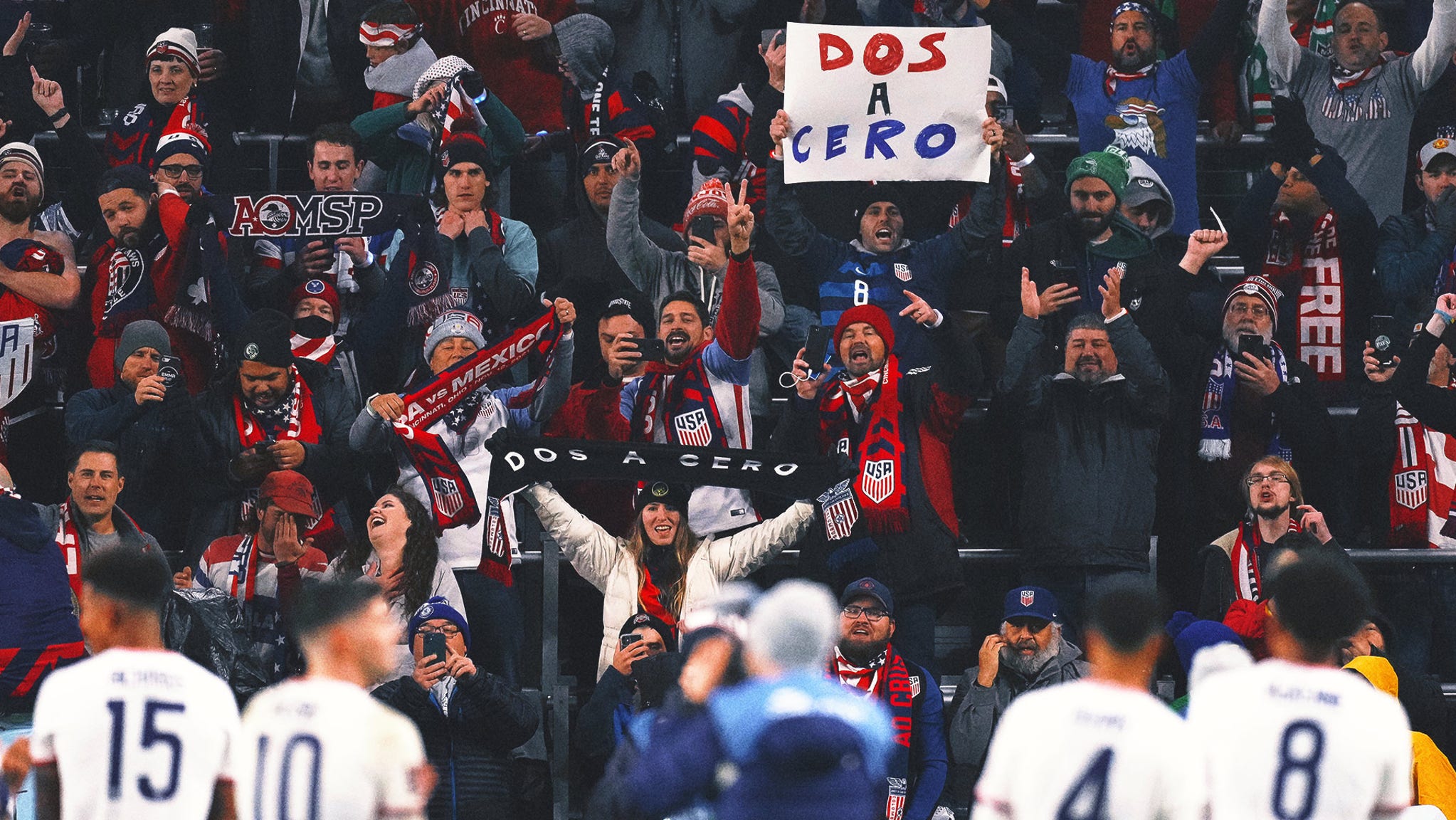
Understanding ‘Dos a Cero’
In the fierce rivalry between the USA and Mexico in soccer, there exists a scoreline that evokes joy in one fanbase while provoking displeasure in the other.
Whether during pivotal matches like the World Cup or in friendly matches against El Tri, this score resonates profoundly among supporters of the USA, often spotted on T-shirts or scarves. The phrase itself—“Dos a Cero”—translates to “Two to Zero” in English.
‘Dos A Cero’ is eternally linked to the USA-Mexico men’s soccer rivalry. (Photo credit should read PAUL VERNON/AFP via Getty Images)
This 2-0 result holds immense significance for the U.S., especially as the historical supremacy of Mexico gradually shifted to a more balanced contention since the early 2000s.
So what exactly is Dos A Cero, and why does it emerge in discussions? Let’s explore.
A Brief Overview of the USA-Mexico Rivalry
To begin with, the USA-Mexico men’s soccer rivalry traces back to 1934, despite not initially starting in either nation.
The first encounter between the two countries resulted in a 4-2 victory for the U.S. in a World Cup qualifying match held in Rome preceding the 1934 tournament in Italy. However, throughout most of the 20th century, Mexico showcased dominance, leaving the USMNT without a win until 1980.
Overall, the teams have faced each other 78 times, with Mexico tallying 37 victories, while the U.S. has secured 24, resulting in 17 draws. Notably, Mexico has only faced defeat at home once—in a friendly match in 2012.
Before the century turned, Mexico had a clear advantage in men’s soccer against the U.S. (Photo credit should read JOHN MOTTERN/AFP via Getty Images)
However, when matches involve stakes—such as World Cup qualifying rounds, Gold Cup contests, or the World Cup itself—the USA holds the edge, winning 16 competitive matches against Mexico’s 14, with nine draws.
The modern phase of the USA-Mexico rivalry has intensified due to an influx of players from both nations making significant impacts in top European clubs. The only World Cup meeting occurred in 2002, where the U.S. eliminated Mexico from the quarterfinals, winning 2-0. This match was significant as it was held in South Korea, marking the third and last instance the rivalry took place outside North America.
Growing interest in soccer post the 1994 World Cup, which the U.S. hosted, and the initiation of Major League Soccer in 1996 contributed to changing the dynamic of this rivalry. Since 2000, the USMNT has achieved 20 victories compared to Mexico’s 19, alongside four draws.
A ‘Cold War’ Leads to Notable Scorelines
A friendly match on October 5, 2000, at the Los Angeles Memorial Coliseum marked a pivotal moment in the rivalry, featuring USMNT icon Landon Donovan, who netted the winner in a 2-0 success, signaling a new chapter ahead.
Five months later, the teams met under diverse circumstances, this time in a World Cup qualifying match on February 28, 2001, under Ohio’s frigid conditions. The match, dubbed La Guerra Fria (“The Cold War”), concluded with Josh Wolff and Earnie Stewart goals, affirming a second consecutive 2-0 win against Mexico.
Then came the defining event of both the rivalry and this scoreline. On June 17, 2002, the two teams faced off again on the grandest platform—at the World Cup. In a match elimination for the quarterfinals, Donovan’s second-half goal solidified the third Dos A Cero.
In subsequent World Cup qualifying matches hosted by the U.S. (2005, 2009, and 2013), the results mirrored the previous matches: all concluded with a 2-0 scoreline. There was even speculation about Clint Dempsey deliberately missing a penalty in the 2013 match to preserve the signature score.
“I always aim to score … I was just a bit tired,” Dempsey stated, explaining it was his first-ever penalty miss for the USMNT.
“It’s a mystical phenomenon, right? It’s like a ghost,” said midfielder Alejandro Bedoya, concerning the recurring scoreline.
As a result of these outcomes, fans of El Tri began believing in a possible Dos A Cero curse.
The Curse is Lifted and the Birth of ‘Dos A Cero’ 2.0
USMNT supporters will forever associate the 2018 World Cup qualifying cycle with the setback against Trinidad & Tobago, which impeded the team from claiming a spot in Russia. However, signs throughout that campaign indicated a looming crisis.
The initial indicator? Mexico notably ended the curse of World Cup qualifying matches held in Columbus, with Rafael Marquez’s late goal on November 11, 2016, leading to a 2-1 victory over the U.S.
“It was a new opportunity for us to craft a new narrative, and we achieved that,” Marquez mentioned after the match. “It had been too long since we triumphed here, with the weather conditions and difficulties, as well as the opponent.”
Unfortunately, the U.S. didn’t in their very next fixture, incurring a 4-0 defeat to Costa Rica, leading to Jurgen Klinsmann’s dismissal as manager. The USMNT subsequently faced challenges throughout the qualifying rounds, ultimately failing to secure a trip to Russia.
However, Dos A Cero resurfaced shortly after—with a slight twist. The USMNT triumphed over Mexico once again 2-0 in a World Cup qualifying match on November 21, 2021, in Cincinnati instead of Columbus, buoyed by a goal from Christian Pulisic that responded to a remark made by El Tri goalkeeper Guillermo Ochoa, stating that “Mexico is the mirror in which the [U.S.] wishes to reflect itself.”
Again, the U.S. repeated the feat on March 24, 2024, with a trophy on the line, as Tyler Adams and Gio Reyna ensured their places in the Dos A Cero timeline, clinching the Concacaf Nations League trophy against Mexico at AT&T Stadium in Arlington, Texas.
In a twist of fate, Mexico secured their own Dos A Cero. In Mauricio Pochettino’s second outing as the USMNT head coach, he got a taste of the rivalry in a 2-0 defeat during a friendly on October 15, 2024, in Guadalajara.
With the USMNT and Mexico both eager to conclude the summer with a flourish and a trophy, anticipation builds for the upcoming Gold Cup final in Houston. It remains to be seen whether that familiar scoreline will once again appear on the stadium screen.


